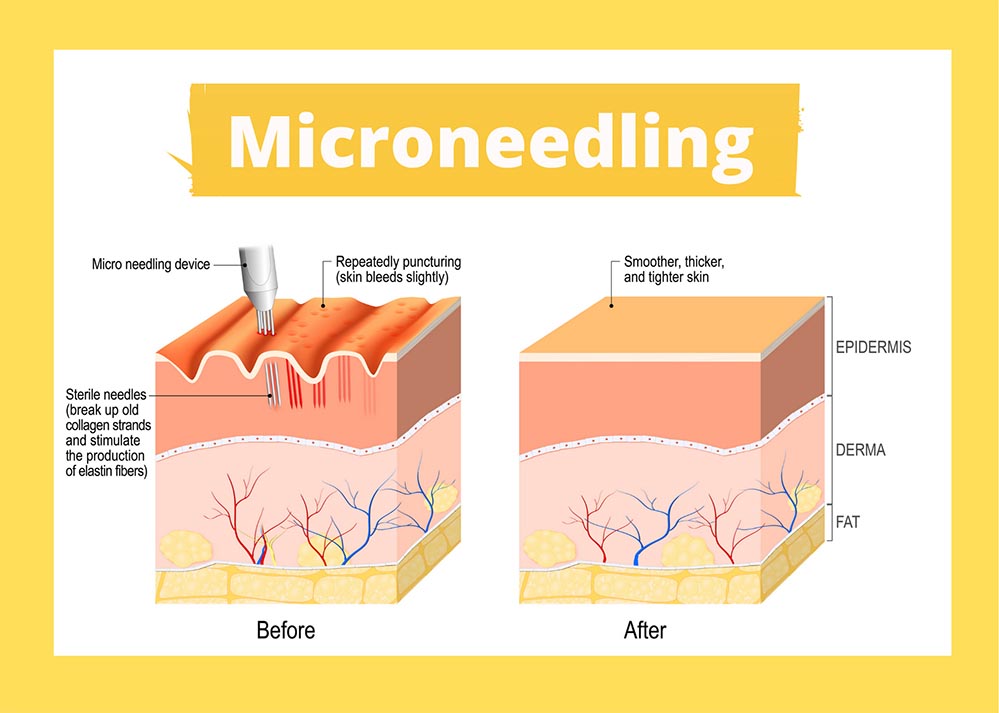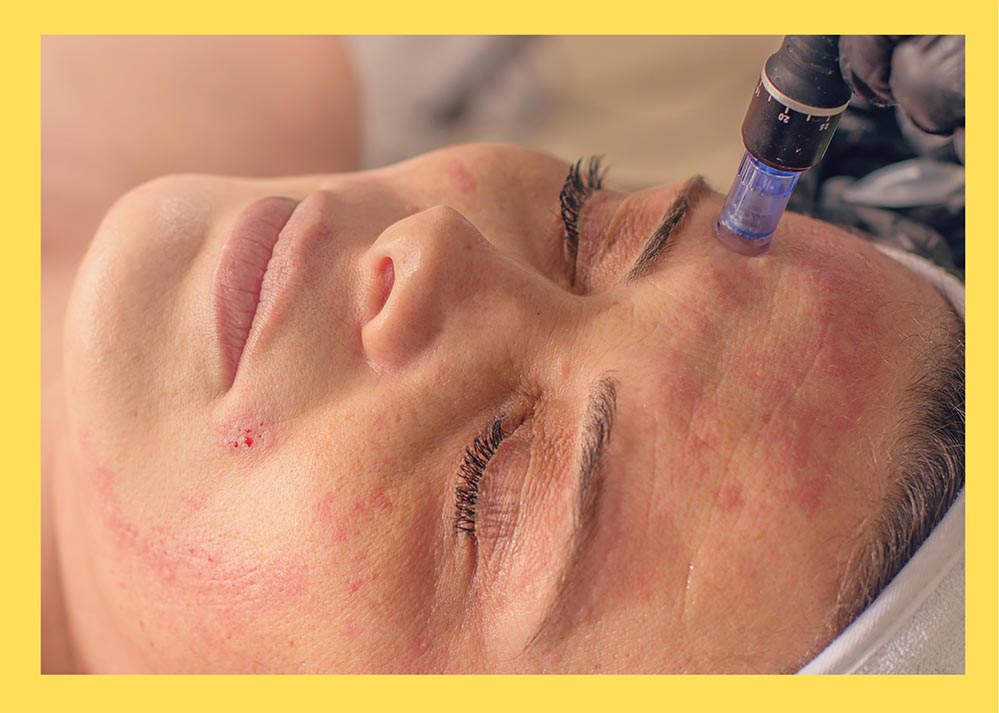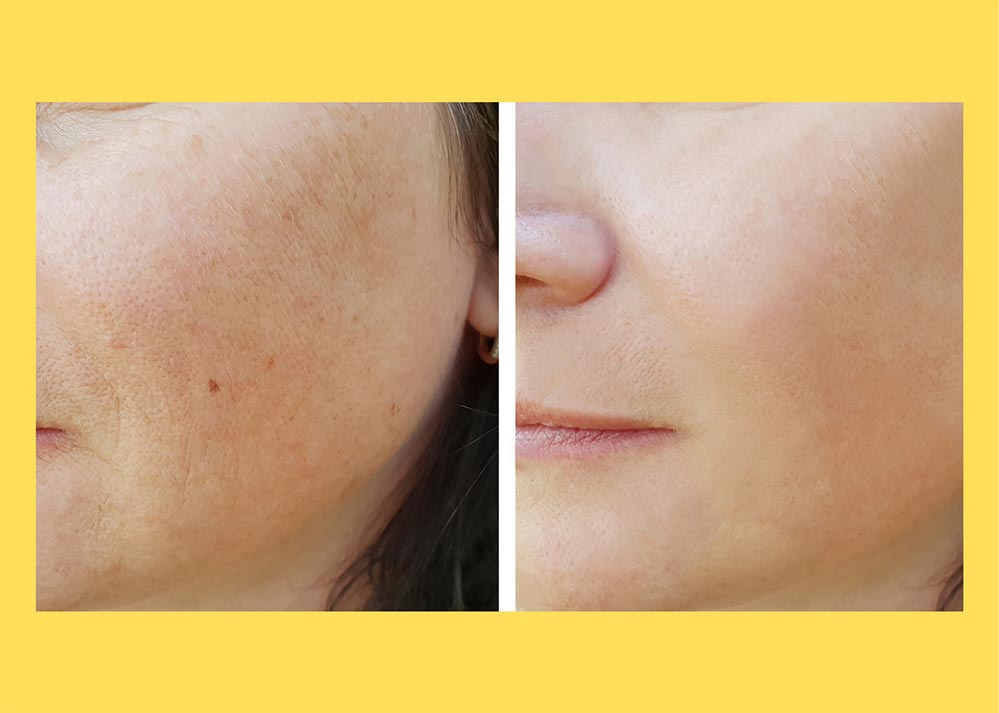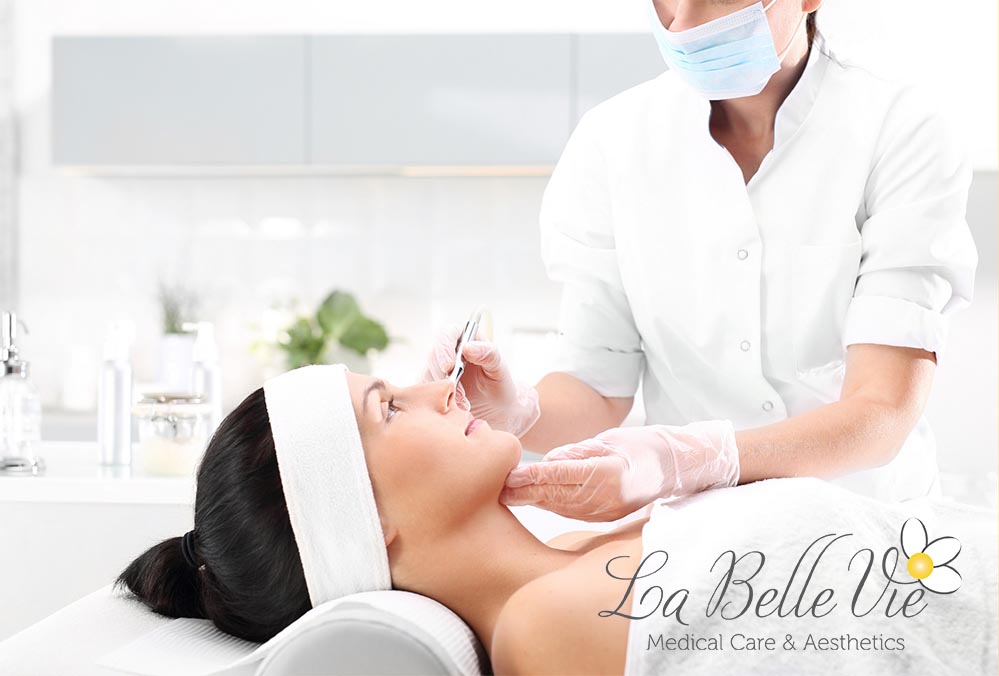Freedom From Acne Scars, Wrinkles, Fine Lines? Try Microneedling
What Is Microneedling?
Microneedling, also known as collagen induction therapy (CIT), is a minimally invasive cosmetic procedure used to treat skin concerns via collagen production. You’ve probably noticed the treatment has taken the skincare industry by storm, and there’s a good reason for that. Microneedling can help those looking to reduce the appearance of scars, stretch marks, fine lines, and other issues—in many cases quite dramatically.
You might be surprised to learn that the procedure was first used in 1905—over 115 years ago! Ernst Kromayer, a German dermatologist, used dental tools to treat hyperpigmentation, birthmarks, and scars. Thankfully, the treatment has evolved quite a bit—dental tools are no longer used—, and microneedling as we know it today has been performed by aesthetic professionals around the world since 1995. It was made popular by Philadelphia physician Dr. Desmond Fernandes and has been used consistently and safely since then.

What Can Microneedling Do For You?
Here’s the range of skincare concerns that you can address with microneedling:
- Wrinkles and fine lines
- Sunspots (also called age spots)
- Acne or other scars
- Enlarged pores
- Uneven skin tone
- Facial laxity (reduced elasticity)
- Stretch marks
Notably, microneedling is not just for your face, either. Many clients find it works great for stretch marks due to weight gain or pregnancy. At least one study has shown that, when combined with fillers, the procedure can be highly effective at reducing the appearance of stretch marks in the abdominal area and thighs.
How Does Microneedling Work?
As mentioned, Microneedling is not an especially new procedure. Medical professionals have been treating their patients with microneedling for over 25 years. It has been shown to be advantageous for several skin concerns and can lead to numerous benefits, including increased collagen.
Ultimately, the procedure leads to improvements in firmness and texture of your skin and improved tone and coloration. The best part? Microneedling involves only tiny needles being passed across the surface of your face or body by hand-held devices.
The process is called microtrauma, and it creates a slight injury on top of an existing scar or problem area, causing it to react by multiplying its cells to rebuild stronger than before. In essence, microneedling forces your skin to do what it does best—heal itself with newer, better skin.
The procedure is performed with a pen-like tool, and your practitioner will use it to make small pricks under the skin. The pinprick size makes you less likely to notice them because they are so tiny. Treatments such as serums and calming products may also be applied during the treatment, depending on your situation.
While the whole procedure takes only around 30 minutes, it might take longer than the average at your first appointment since we’ll need time to do an assessment and treatment plan.

Does It Hurt?
At La Belle Vie, we want you to have a relaxing and refreshing experience. So we’ll start by applying a numbing cream to the area you want to be treated. This will minimize any discomfort you feel.
However, most of our patients remark that while microneedling doesn’t feel great on your skin like some of our other treatments, it’s not bad either. Most do not mind the minimal discomfort involved, especially when the results are so remarkable.
Who Should Not Get Microneedling?
As with most aesthetic procedures, microneedling is not for everyone. There are a few circumstances where you might not want to undergo this treatment, including if:
- You have eczema, psoriasis, or other skin diseases
- You have recently undergone radiation therapy
- You scar easily
- You have open wounds or sores in the treatment area
- You are pregnant
- You are taking certain medications to treat acne
What Are the Potential Side Effects of Microneedling?
Nearly all cosmetic procedures come with some risks. Most commonly, they include things like redness and irritation following the process. However, you may also experience some slight bruising, bleeding, or peeling at the site for a few days. Infection is also a potential (although unlikely) risk.
Typically, however, the side effects are very mild and involve redness or irritation the day of the treatment. This usually goes away within a few hours. However, if you try microneedling and experience unwanted side effects or discomfort, you’ll want to reach out to your doctor or us.

Does Microneedling Really Work?
Yes! The first thing you will notice is that your skin will feel silky-soft and products will absorb much better than before. You will also see a smoother and brighter complexion right away. However, the most dramatic improvements will be visible within a few weeks after treatment. That’s because the micro-wounds created during the therapy trigger your body’s wound healing process, and it takes a bit of time for your body to create new healthy collagen.
Most clients need more than one session to get the results they are looking for. Therefore, we will talk with you about your treatment goals during your initial consultation. This way, you will know what to expect and have a better idea of the time it may take to get the best results for your particular situation.
At La Belle Vie, we also offer a host of complementing treatments to microneedling, and we will be happy to talk to you about all your options. The important thing is that you are ultimately satisfied with your final results.
- PRP Facial and Facelift: Natural Rejuvenation in Draper, Utah - February 4, 2025
- Trigger Point Injections with Botox: Advanced Pain Management in Draper, Utah - February 4, 2025
- Men’s Guide to Testosterone Replacement Therapy - January 23, 2025






